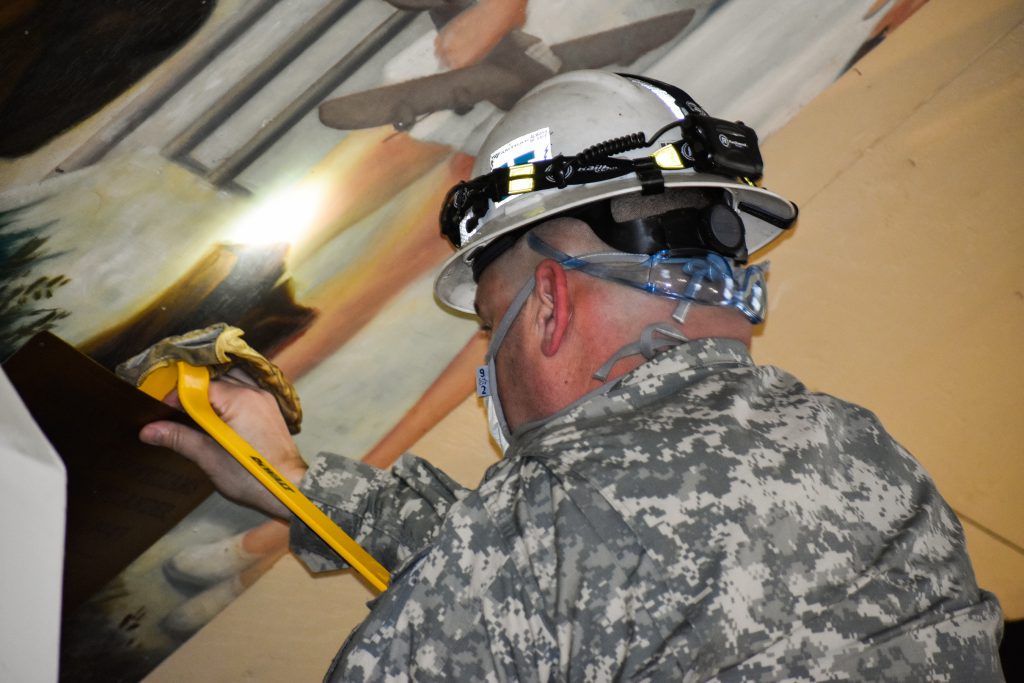Arsenal of Democracy: Historic Murals Rescued
Article by U.S. Air Force Lt. Col. Wayde Minami
Photos by U.S. Army Maj. Kurt M. Rauschenberg
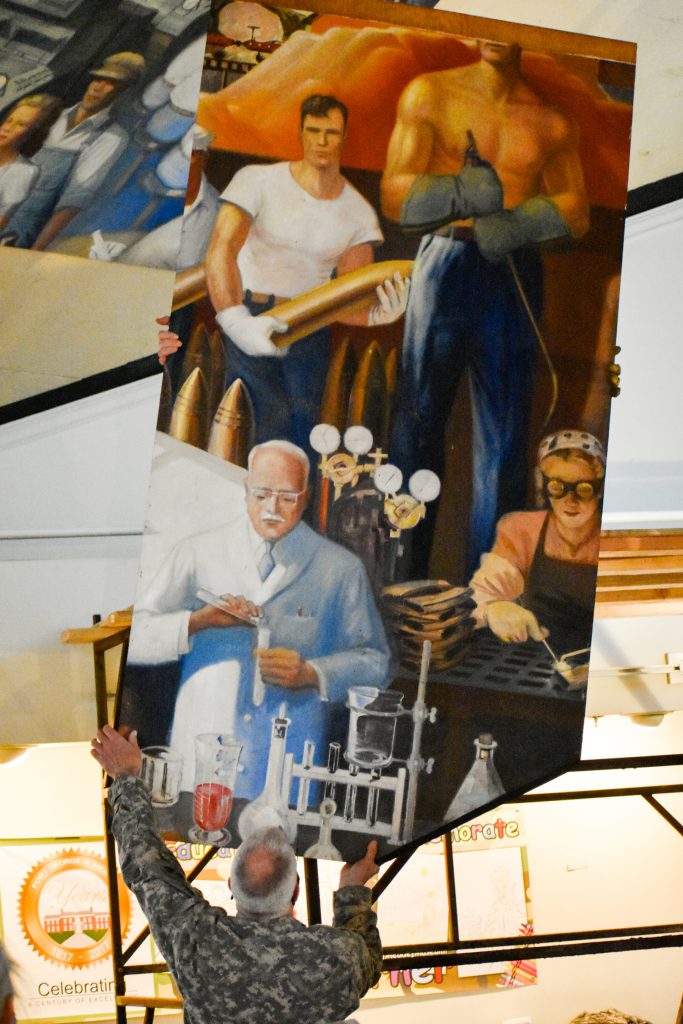
The rescue of two unique pieces of public art created during World War II began Feb. 13, 2021, with the help of the Maryland Defense Force, the Maryland National Guard, and Fort Meade garrison.
The paintings, a pair of mammoth 35-by-40-foot murals completed in 1943 as backdrops for two service clubs on Fort Meade, were produced by Technicians 4th Grade Clarence S. McWilliams and Frank Schwartzlander, who were Soldiers assigned to the post during WWII. Both were trained artists, and McWilliams went on to become a successful commercial illustrator after the war.
The first mural depicts an allegorical rendering of the “arsenal of democracy,” juxtaposing the industrial and agricultural might of the United States with that of its armed forces. The style of the work harkens back to Depression-era public art created under the auspices of the Works Progress Administration.
The second mural depicts Fort Meade namesake Gen. George G. Meade at the Battle of Gettysburg, with the scene flanked by World War II era Soldiers of the 29th Infantry Division, a National Guard division whose members came primarily from Maryland and Virginia, and the 76th Infantry Division, whose original members came mostly from northern states. Both units trained at Fort Meade during the war.
The murals were mounted on a high, vaulted ceiling of the former Fort Meade Museum, which is slated for demolition. The museum was recently closed by the U.S. Army Center of Military History as a cost-saving measure, and the historic murals were dropped from the Army’s collection of historical property. With their historic designation removed, the art faced the prospect of being destroyed when the building is torn down.
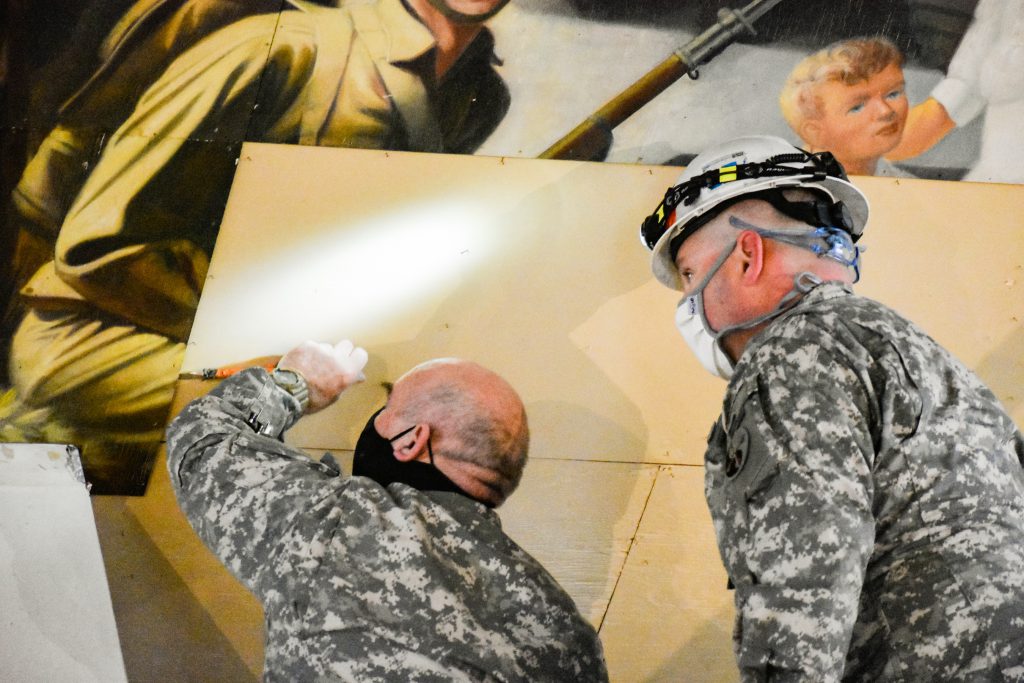
“Once they were dropped by the Center of Military History, they became just another part of an old building as far as the Army is concerned,” said Barbara Taylor, a contractor working at the Maryland Museum of Military History in Baltimore and a former employee of the Fort Meade Museum. “But they’re so much more than that. They have significance because they’re a microcosm of America at the time. As such, they show us where we were and how far we’ve come and how the military is necessary to preserve the nation.”
Taylor was crestfallen at the impending loss of two unique pieces of art and alerted the Maryland National Guard, which operates the Maryland Museum of Military History. The National Guard quickly agreed to take custody of the murals, and with the help of Mary Staab, a lieutenant colonel in the Maryland Army National Guard and the director of Fort Meade’s Directorate of Plans, Training, Mobilization, and Security, a transfer of ownership was arranged.
“The building is going to be torn down, and if it hadn’t been for the Maryland Guard taking custody of them, they’d be destined for the landfill,” Taylor said.
But while Maryland National Guard and Fort Meade officials were on board with transferring the murals, they still had to be removed from the ceilings to which they’d been affixed—a delicate operation considering the age and fragility of the pieces, which had been painted on thin sheets of plywood that were nearly 80 years old. Previous estimates had been prohibitively expensive, with one contractor asking $70,000 for the work.
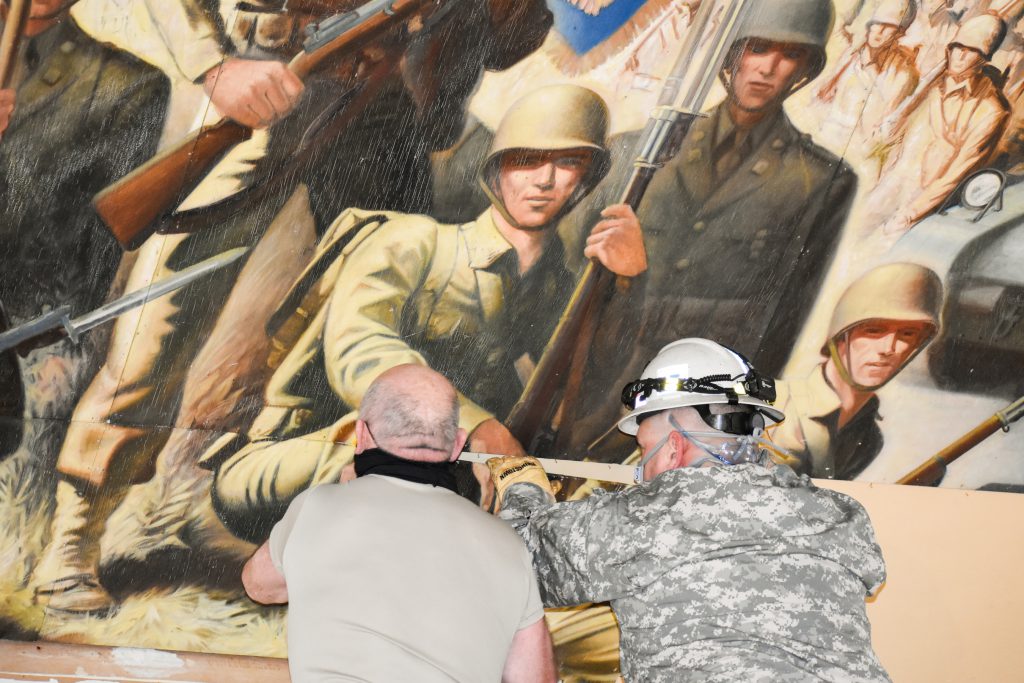
Fortunately, the Maryland Defense Force, the state’s uniformed volunteer militia branch, stepped in to tackle the mission. On a frigid, icy Saturday morning, four members of the Defense Force set to work removing the murals from the ceiling of the unheated building. After erecting scaffolding to reach the murals, they began carefully removing the panels, taking pains not to damage the painted surfaces or crack the ancient plywood. From there, each panel was passed to the ground, where Defense Force members removed protruding nails before carrying them to another area, where Taylor, Staab, and other volunteers carefully wrapped each piece in preparation for shipment.
It was a two-day effort made all the more difficult by the need to wear masks and maintain social distancing due the ongoing pandemic. Inclement weather led to a minor delay in relocating the panels, but on Feb. 24, the murals were safely moved to the Fifth Regiment Armory in Baltimore, Maryland, where they are awaiting professional cleaning and conservation before being put on exhibit. According to Taylor, the Maryland Military Historical Society will be helping apply for funding to offset the cost of the conservation.
It was the second time the murals had experienced an 11th-hour rescue from the wrecking ball.
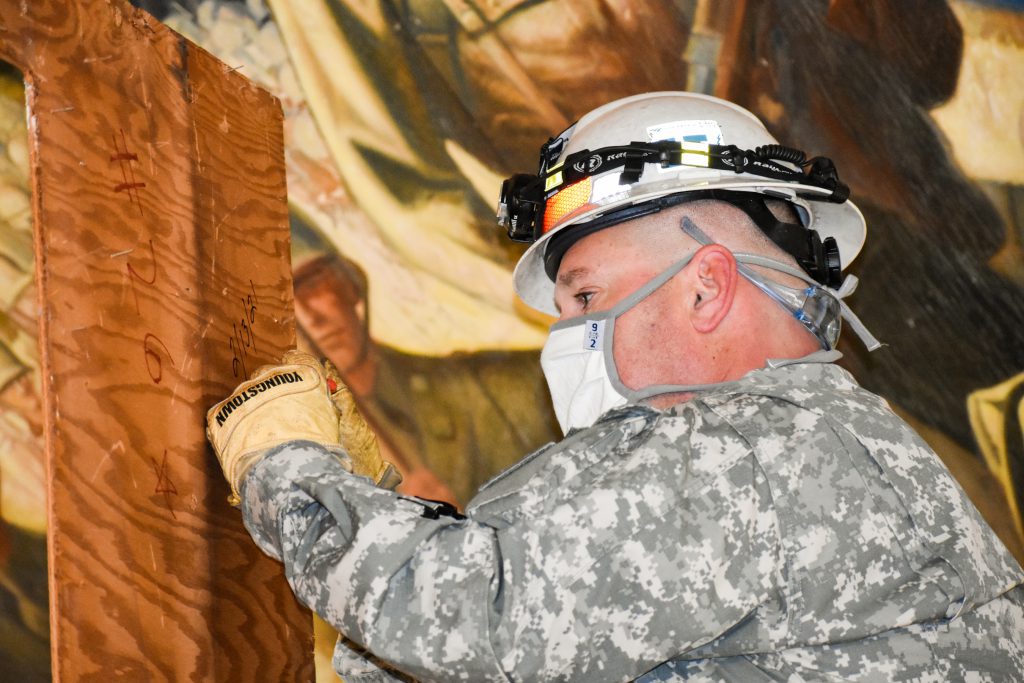
In the late 1970s, Fort Meade was in the process of removing old wooden structures left over from World War II, and the two service clubs containing the murals were on the list of buildings to be demolished. After the war, the buildings had been converted to other uses, and over the decades the two pieces of art had been largely forgotten.
When workers preparing to tear down the former service clubs discovered the murals, they notified Fort Meade officials—who had had no idea they were there—and demolition was delayed long enough for them to be removed. When the Fort Meade Museum reopened following an expansion in 1982, the murals were centerpieces of the new structure, which had been designed specifically to house them.
While the building that housed them at Fort Meade for nearly 30 years will soon be a thing of the past, two historic treasures at least won’t be—thanks to the efforts of several dedicated employees and four members of the Maryland Defense Force.
